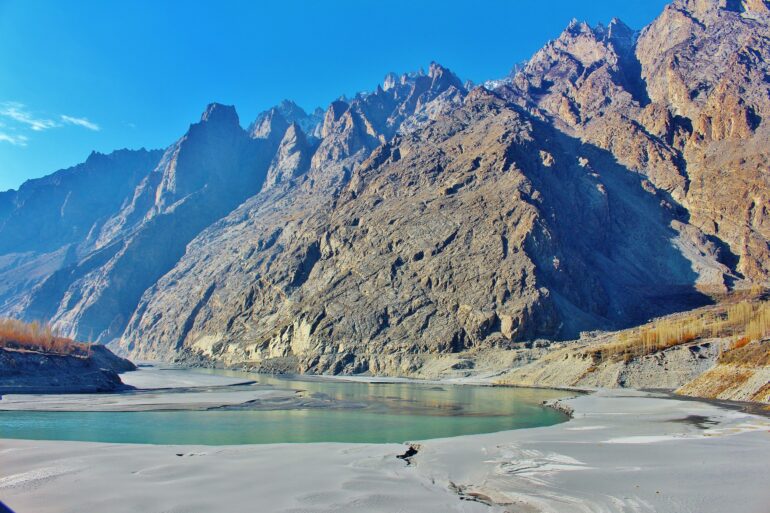TL;DR:
- Geologists at UCLA have developed an innovative technique that utilizes artificial intelligence (AI) to predict landslides more accurately.
- The new method improves the interpretability of AI-based machine-learning models and requires less computing power than traditional predictive models.
- By decoupling the analysis of AI models, researchers can identify the key variables contributing to landslide susceptibility.
- The approach has been successfully applied in the eastern Himalaya mountains, achieving accuracy comparable to deep neural networks (DNNs).
- The new AI program, known as a superposable neural network (SNN), requires fewer computational resources and can be run on devices with limited processing power.
- The UCLA team plans to extend their work to other landslide-prone regions, including California, to develop early warning systems for multiple surface hazards.
Main AI News:
Advancements in artificial intelligence (AI) are transforming the field of geology, particularly in the critical area of landslide prediction. Researchers at UCLA have developed a groundbreaking technique that harnesses the power of AI to better anticipate the occurrence and causes of landslides, offering unprecedented opportunities to safeguard lives and protect properties in regions prone to natural disasters. This innovative method, featured in a recent publication of the esteemed journal Communications Earth & Environment, not only enhances the accuracy and interpretability of AI-based machine-learning techniques but also overcomes limitations associated with computing power, making it applicable across diverse geographical contexts.
The significance of this breakthrough cannot be understated, particularly in disaster-prone areas like California, where the convergence of droughts, wildfires, and earthquakes creates an ideal recipe for landslide catastrophes. With climate change exacerbating these risks, the urgency to develop effective prevention and mitigation strategies grows exponentially. Predicting the precise location and timing of landslides is an intricate challenge influenced by numerous factors, including terrain shape, slope characteristics, drainage patterns, soil and bedrock properties, and environmental conditions such as climate, rainfall, hydrology, and seismic activity. Considering the complexity of these variables, the ability to anticipate when and where the land will give way becomes both an art and a science.
Traditionally, geologists have relied on physical and statistical models to assess landslide risks in specific areas. While these models can achieve reasonably accurate predictions given sufficient data, physical models are resource-intensive and unsuitable for large-scale application, while statistical models offer limited insight into the underlying risk factors they consider. In recent years, AI machine-learning models, known as deep neural networks (DNNs), have shown promise in landslide prediction. By feeding vast amounts of landslide-related variables and historical data into interconnected algorithms, DNNs rapidly process information and learn to make highly accurate forecasts. However, similar to statistical models, DNNs fail to provide a clear explanation of their predictions, impeding researchers’ ability to interpret results and identify causative factors for preventive measures.
Addressing this critical gap, UCLA researchers, led by co–first authors Kevin Shao and Khalid Youssef, have developed a novel approach that deciphers the inner workings of DNNs and facilitates actionable insights. This groundbreaking method, introduced as a superposable neural network (SNN), retains the complex adaptive nature of DNNs while allowing for the separation and analysis of different data inputs. The researchers fed the SNN with approximately 15 geospatial and climatic variables relevant to the eastern Himalaya mountains—an ideal region due to its high incidence of landslide-related human losses. The SNN model not only achieved accuracy levels comparable to DNNs in predicting landslide susceptibility but also enabled researchers to disentangle the variables and discern their respective contributions to the results.
In the words of Khalid Youssef, the inability to discern why and which specific variables play major roles in causing landslides has been a significant limitation of previous models. The UCLA team’s groundbreaking method resolves this issue by offering a more comprehensive understanding of the critical factors that drive natural disasters. Seulgi Moon, a corresponding author and associate professor of Earth, planetary and space sciences at UCLA, further emphasized the importance of this breakthrough, comparing it to autopsies performed to determine causes of death. While field measurements and historical records remain crucial for identifying precise triggers of landslides, the new AI prediction model excels in identifying key variables and quantifying their contributions to landslide susceptibility.
Importantly, the UCLA researchers’ innovative AI program requires significantly fewer computing resources than traditional DNNs, making it feasible to run effectively even on devices with limited processing power. Louis Bouchard, a professor of chemistry and bioengineering at UCLA, highlighted this advantage, stating that the SNN could be executed on an Apple Watch, in stark contrast to DNNs, which necessitate powerful computer servers for training purposes. Building upon their success, the team aims to expand their work to other landslide-prone regions globally. By applying their advanced system to areas such as California, where landslide risks are compounded by frequent wildfires and earthquakes, early warning systems can be developed to account for multiple signals and predict various surface hazards, including floods.
Conclusion:
The integration of artificial intelligence into geology practices represents a significant advancement in landslide prediction. The ability to accurately identify and interpret key variables influencing landslides enhances the effectiveness of risk assessment and mitigation strategies. The development of the superposable neural network (SNN) method, requiring less computing power and offering clearer insights, opens up new possibilities for widespread application. This technological breakthrough has the potential to drive the market for geotechnical and geological consulting services, as businesses and governments seek more sophisticated tools to manage and mitigate the risks associated with landslides. The enhanced predictive capabilities and actionable results provided by AI-based models will empower stakeholders to make informed decisions, protect lives and assets, and build more resilient communities in landslide-prone areas.

